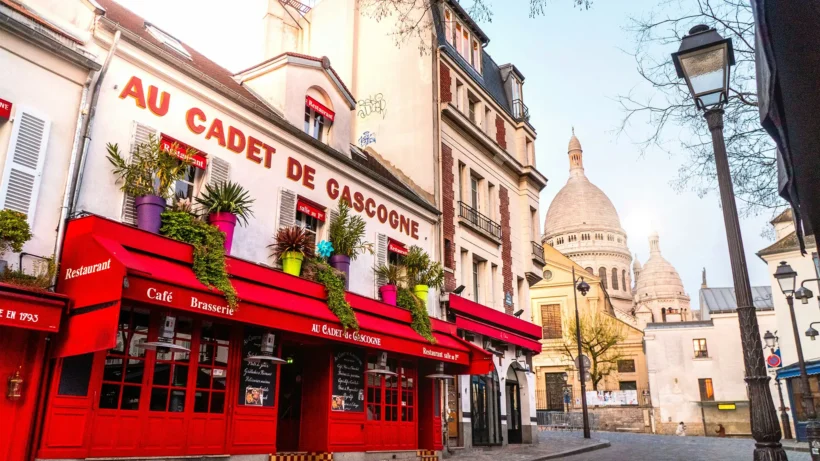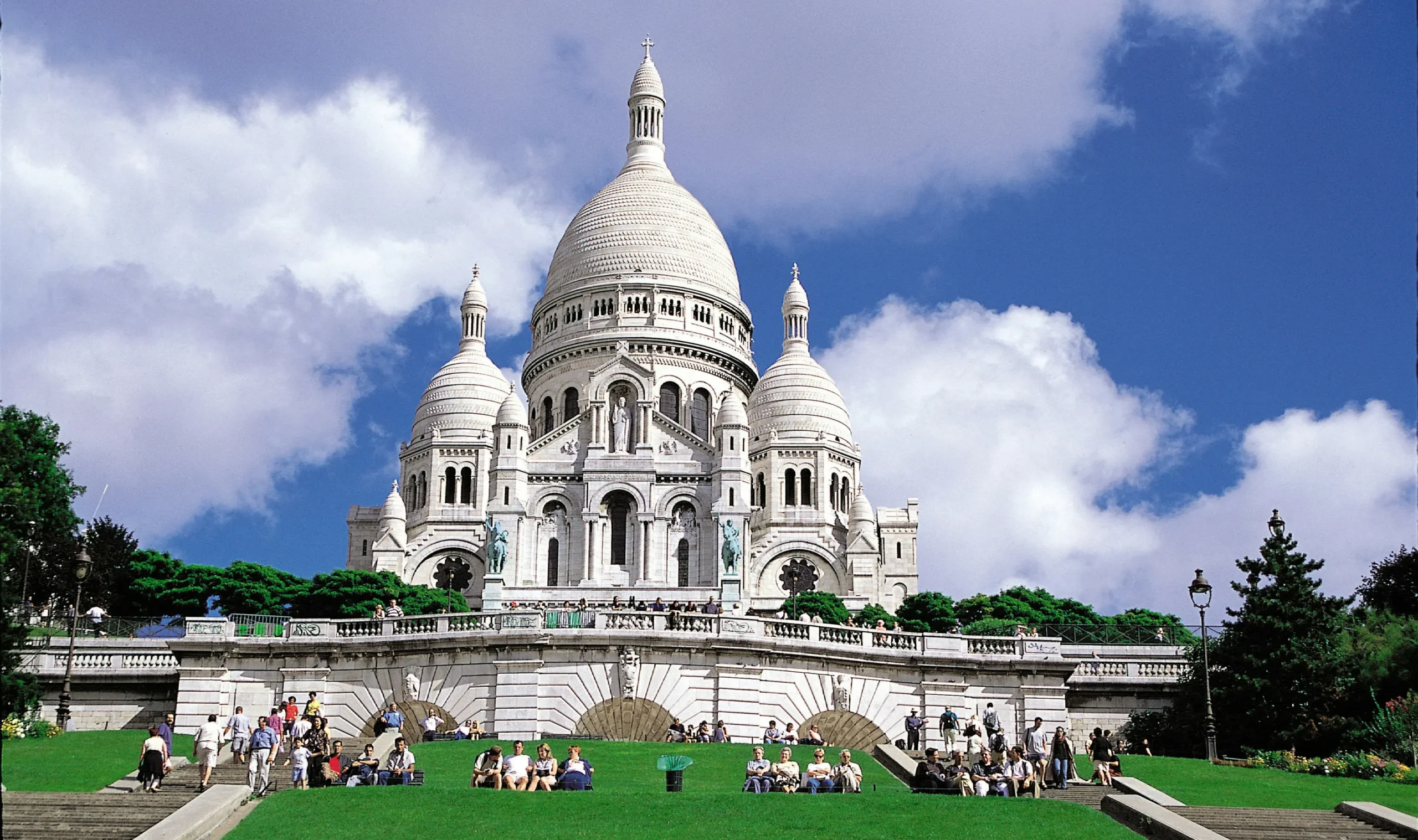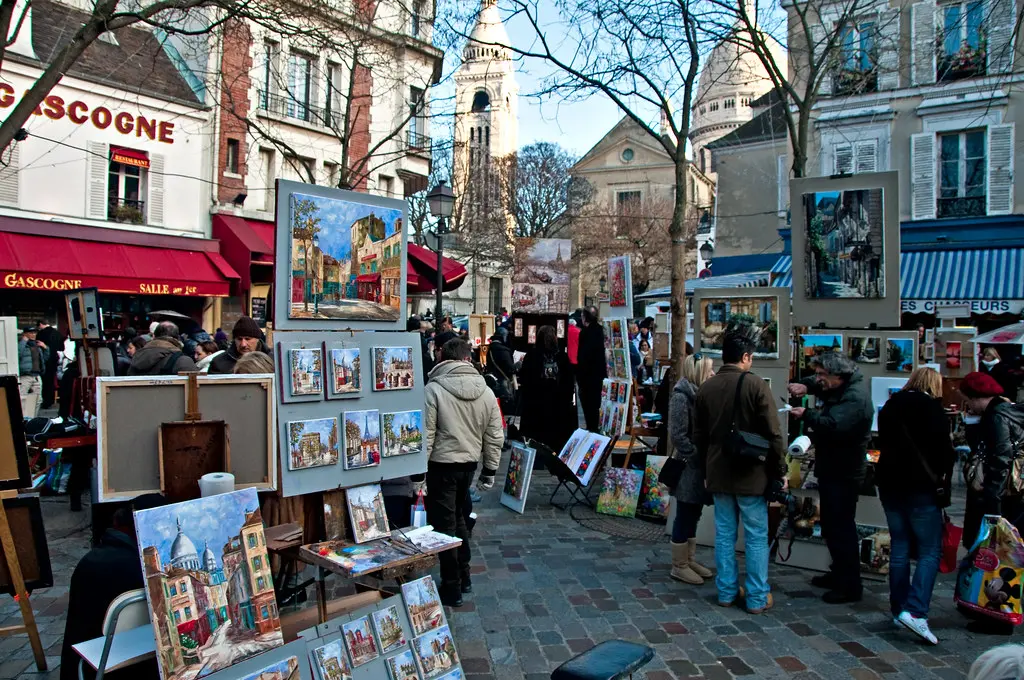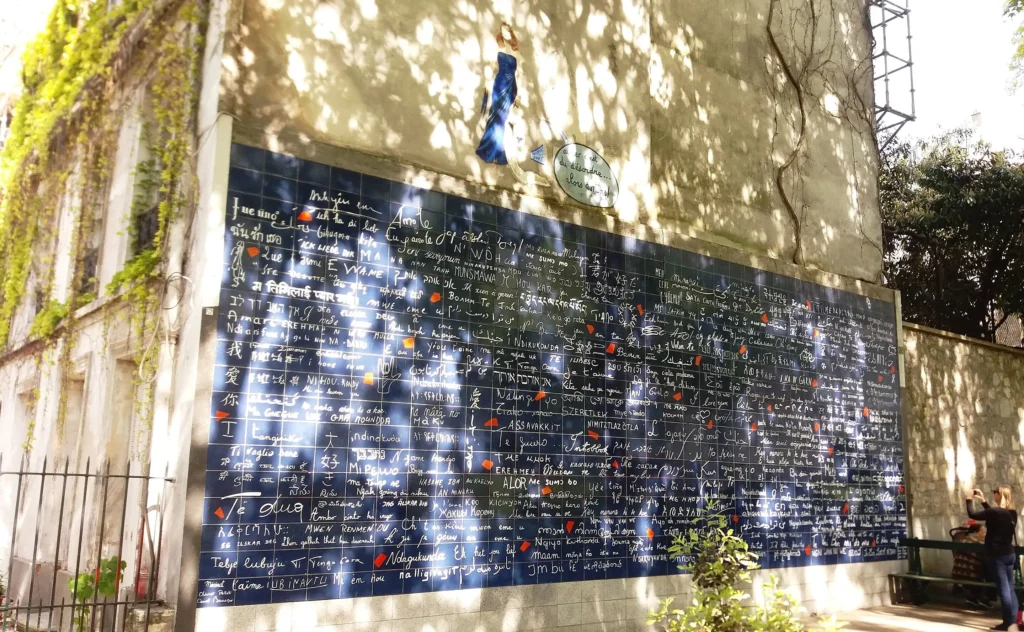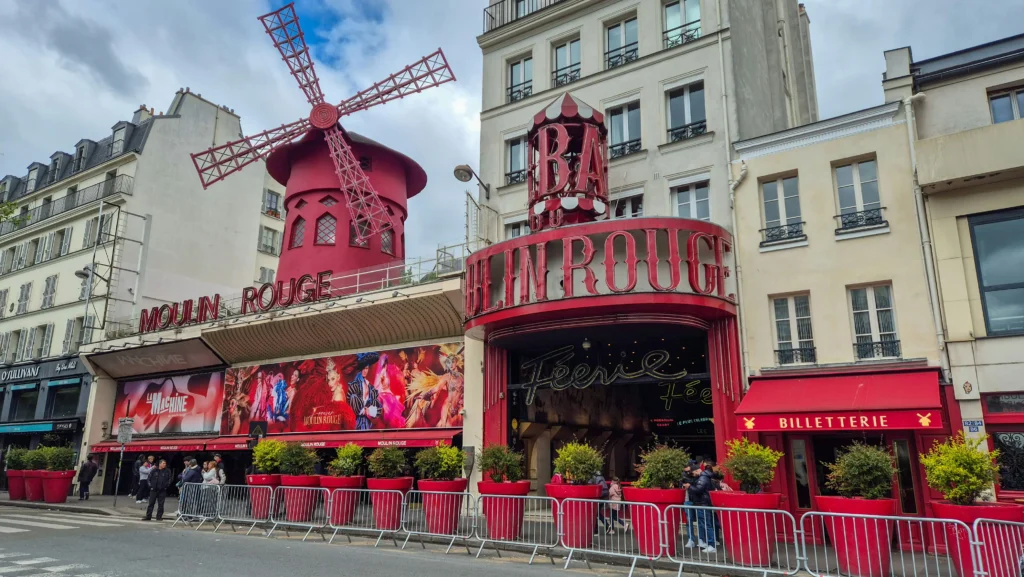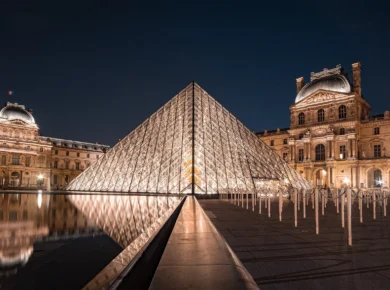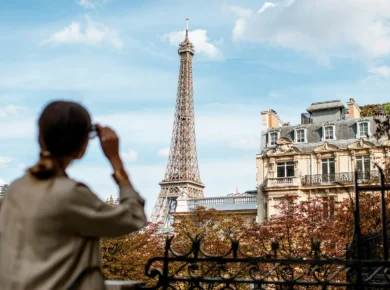Montmartre isn’t just a neighborhood — it’s a feeling. Cobblestone streets wind up toward a white basilica that watches over Paris, while ivy climbs the walls of pastel houses and café chairs spill onto narrow sidewalks. It feels like a village tucked inside the city, a place where the ghosts of painters and poets still linger.
But Montmartre has a double life. Alongside the charm and history come crowds, souvenir stalls, and busy squares that can feel overwhelming.
That’s why this guide isn’t a checklist of “must-sees.” It’s a curated walking tour designed for the solo traveler — a path that lets you experience Montmartre’s beauty, skip its worst bottlenecks, and find those moments of quiet magic that are easy to miss when you’re hurrying through.
The Solo Advantage: Why Montmartre is Best Explored Alone
Montmartre rewards curiosity. It’s a maze of winding lanes where a side street can lead to a tiny garden, a view of the city, or a café that feels like it’s been waiting just for you.
When you’re alone, you don’t need a plan beyond following what catches your eye. You can wander down Rue Lepic just to see where it goes. You can pause at a terrace with a coffee and let an hour pass without a single word exchanged. You can stand in front of a street musician and listen until you feel like moving on.
There’s no rush. No compromises. Just the freedom to let Montmartre unfold in its own rhythm — and yours.
Your Self-Guided Walking Tour of Montmartre
Starting Point: Getting to Montmartre
- Anvers Métro (Line 2): Direct route to Sacré-Cœur via Rue de Steinkerque (and the funicular if you’d rather ride than climb).
- Abbesses Métro (Line 12): A slower, more atmospheric approach through charming streets. The Art Nouveau entrance here is worth a photo before you begin.
For more guidance on navigating the city’s transit system, see our Definitive Guide to Using the Paris Métro.
1
The Majestic Sacré-Cœur
Your tour begins with Montmartre’s crown jewel. The Sacré-Cœur Basilica is free to enter and open every day from early morning to late evening. Dress respectfully (shoulders and knees covered), and consider climbing the dome for an even higher view.
Before stepping inside, linger on the steps — especially if you’ve arrived early — for one of the most sweeping panoramas of Paris. Watch the city stretch out beneath you as morning light softens the rooftops.
2
The Artistic Buzz of Place du Tertre
A few minutes’ walk from Sacré-Cœur, Place du Tertre is where artists set up easels to paint portraits, Parisian street scenes, and abstract works. The square is lively and often crowded, but as a solo traveler you have the luxury of simply observing.
Claim a spot at a café terrace and people-watch. Listen to snippets of conversations in half a dozen languages. There’s no need to buy a painting or sit for a portrait unless you truly want to — sometimes the experience is in just being there.
3
The “Travel Deeper” Path to Hidden Gems
Leave the main square via Rue Norvins, a winding street that feels frozen in time. Soon you’ll reach:
- La Maison Rose — a pink, green-shuttered café that’s been painted and photographed for decades.
- Rue de l’Abreuvoir — one of Montmartre’s most charming lanes, curving gently with the basilica peeking in the background.
- Vignes du Clos Montmartre — a working vineyard hidden in plain sight. It’s closed to the public most of the year, but the view through its gates is a glimpse into Montmartre’s agricultural past.
- Musée de Montmartre(optional) — set in a 17th-century building, this museum blends art history with the quiet of its garden courtyard.
4
A Quiet Pause at the Wall of Love
Descend towards Square Jehan Rictus, where the Mur des Je t’aime (“I Love You Wall”) displays the phrase in over 300 languages.
It’s a modern contrast to Montmartre’s historic charm — and a good reminder that love, in all its forms, is part of this neighborhood’s story. Take a moment to find your language, or one you wish you knew.
5
The Descent to the Moulin Rouge
From here, follow Rue Lepic or Rue des Abbesses downhill until the streets widen and the red windmill of the Moulin Rouge comes into view.
It’s a fitting end to your walk — a symbol of Montmartre’s bohemian past and its enduring ability to reinvent itself. Whether you step inside for a show or simply admire it from the outside, you’ve completed a loop through the neighborhood’s many layers.
A Solo Traveler’s Guide to Montmartre Safety
Be Aware, Not Afraid:
Montmartre is generally safe, but there are a few common scams:
- The Bracelet Scam: Someone may try to tie a bracelet to your wrist and then demand payment. Politely but firmly say no.
- The Petition Scam: People with clipboards may ask for signatures, then insist on a donation. Just keep walking.
At Night:
The main areas — around Sacré-Cœur, Place du Tertre, and Abbesses — are well-lit and busy into the evening. As with any big city, stick to these streets, avoid dark alleys, and trust your instincts.
Frequently Asked Questions
Here are quick answers to some of the most common logistical questions for a solo trip to Montmartre.
How much time do I need for this walking tour?
The beauty of this self-guided tour is that you can move at your own pace. To walk the route comfortably, see the main sights, and take photos, a good estimate is 2 to 3 hours. If you plan to linger in a café, browse the art at Place du Tertre, or visit the Musée de Montmartre, you could easily and happily spend half a day exploring.
Is the Montmartre funicular worth it?
The funicular is a practical tool, not a scenic journey. It’s a quick, two-minute ride that saves you from climbing the 222 steps up to the Sacré-Cœur. It’s absolutely “worth it” if you want to save your energy for walking around the village at the top, or if you have mobility concerns. The ride is included in most travel passes (like the Navigo) or costs one standard Métro ticket.
Are there good places to eat alone in Montmartre?
Yes, Montmartre is full of wonderful options for a solo diner. The key is to step away from the main tourist square, Place du Tertre. Wander the side streets like Rue des Abbesses or Rue Lepic, where you’ll find smaller, more authentic bistros with welcoming atmospheres. Grabbing a crêpe from a street stand or picking up a sandwich from a boulangerie to enjoy on a quiet bench are also classic, perfect solo dining experiences.
What is the best day of the week to visit Montmartre?
For the quietest and most atmospheric experience, aim for a weekday morning (Tuesday through Friday). You’ll encounter fewer crowds, giving you more space to wander the charming streets. Weekends, especially Saturday afternoons, are the busiest. However, if you enjoy a lively, bustling atmosphere, a weekend evening can be magical as the restaurants and squares come to life.
Can I explore Montmartre without going inside the major attractions?
Absolutely. The streets themselves are the main attraction here.
Conclusion
Montmartre is more than its landmarks — it’s a rhythm, a mood, a patchwork of moments that feel personal when you experience them alone.
In Montmartre, every turn is an invitation: to a view, a café, or a corner you didn’t expect. Alone, you can answer whichever one calls to you.
Now that you’ve explored the charming streets of Montmartre, discover more incredible solo experiences in our Ultimate Guide to Solo Travel in Paris.
